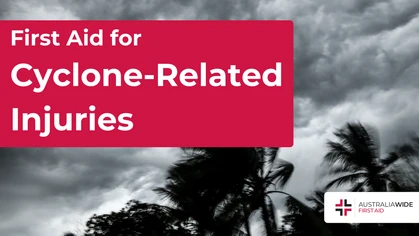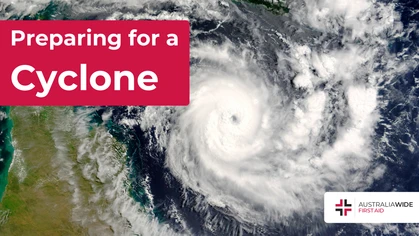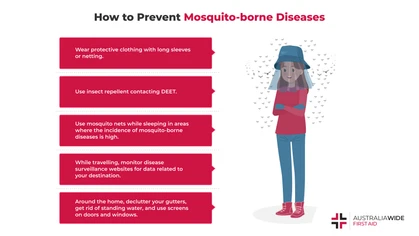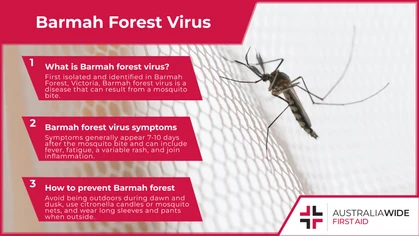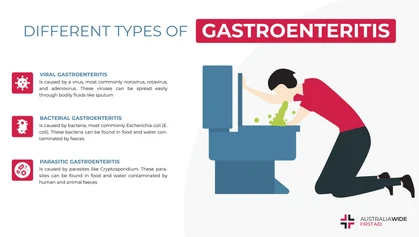Murray Valley Encephalitis

Seasonal Concerns
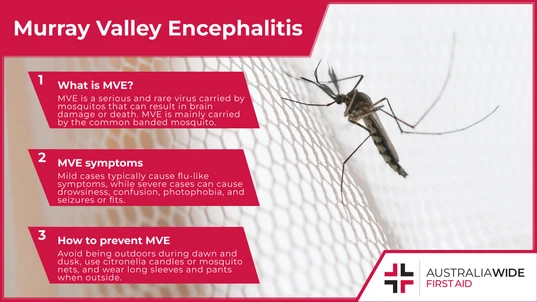
Murray Valley encephalitis is a serious and rare virus carried by mosquitos that can result in brain damage or death. The best way to prevent infection by Murray Valley encephalitis is to protect yourself from mosquito bites.
Murray Valley encephalitis is a serious and rare virus carried by mosquitos that can result in brain damage or death. Less severe symptoms of Murray Valley encephalitis include fever, nausea and vomiting, headache and muscle aches. Most people who are infected with Murray Valley encephalitis virus may not show any symptoms. Murray Valley encephalitis becomes serious when viral encephalitis (swelling of the brain) occurs. Symptoms of viral encephalitis include severe headaches, drowsiness, confusion, seizures and fits. It is important to seek immediate and urgent medical attention should any of these symptoms appear. The best way to prevent infection by Murray Valley encephalitis is to protect yourself from mosquito bites. Read on for some simple, but effective ways of reducing mosquito bites as summer approaches.What is Murray Valley encephalitis?
The common banded mosquito (culex annulirostris) is the main species known to carry Murray Valley encephalitis. These mosquitos are found all over Australia and pick up the virus from feeding on water birds such as herons and egrets. To date, no human to human transmission is known. Murray Valley encephalitis virus was first isolated in 1951 from patients who died from inflammation of the brain (encephalitis) in the Murray Valley in Victoria and South Australia. Murray Valley encephalitis appears predominantly in the northern parts of Western Australia, Northern Territory, and Queensland, but extends inland and along coastal regions. An outbreak with a confirmed 17 cases of Murray Valley encephalitis in 2011 was associated with the significant flooding and the increased rainfall in Australia that year. Mosquitos that carry Murray Valley encephalitis are most active during dusk and dawn and love to breed in water.What are the Symptoms of Murray Valley encephalitis?
Symptoms of Murray Valley encephalitis may appear anytime 5-28 days after infection, with cases generally appearing within the 7-12 day window:- Most people won’t show any symptoms of infection.
- Mild to acute cases of Murray Valley encephalitis show flu-like symptoms of fever, nausea and vomiting, along with headaches and muscle aches.
- Severe cases of Murray Valley encephalitis show symptoms such as drowsiness and confusion, sensitivity to light (photophobia) and seizures or fits, particularly within young children. Symptoms can last between 1 to 2 weeks, and either quickly or slowly subside over time.
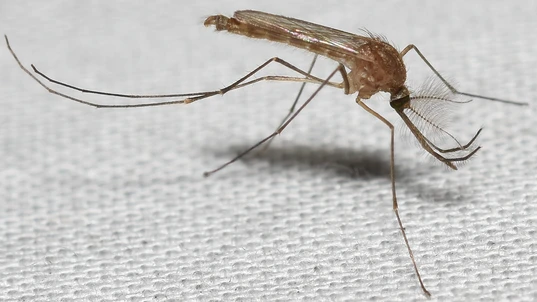
Mosquito-borne diseases occur when an adult female mosquito transmits a pathogen, whether that be a virus or parasite, from one vertebrate host (either animal or human) to another.
What are mosquito-borne diseases?
Murray Valley encephalitis virus is a mosquito-borne disease, (or a vector-borne disease) that is transferred to humans via mosquitos. Mosquito-borne diseases kill more than a million people all over the world each year. Mostly found in humid, wet, and warm tropical environments around the world, examples of more serious forms of mosquito-borne diseases are malaria, yellow fever, and dengue fever. Murray Valley encephalitis is one of the serious forms of a mosquito-borne virus. In Australia, the prevalence of mosquito-borne diseases is growing due to more people living closer to mosquito breeding areas and periods of increased rainfall and climate change. With the recent and continuing flooding around the country, mosquito-borne disease is becoming an increasingly important public safety concern, with councils all over the country implementing mosquito culling policies in order to curb the risk of disease.How to prevent Murray Valley encephalitis?
As mosquito bites can be both uncomfortable and painful, they can also cause allergic reactions in the way of anaphylaxis. Preventing Murray Valley encephalitis means lowering your risk of a mosquito bite. Here are some simple ways of protecting yourself and your home from mosquito-borne diseases such as Murray Valley encephalitis:- Avoid being outdoors during times when mosquitoes are most active (dawn and dusk).
- Wear long sleeves and pants when you go outside, as mosquitoes can bite through clothes.
- Use citronella candles or mosquito nets for added protection.
- Use repellent every time you go outside. The best mosquito repellents contain DEET, picaridin, or oil of lemon eucalyptus.
- Use screens on doors and windows around your home.
- Get rid of standing water around your home (mosquitoes lay their eggs in water).
- Keep gutters clean and free of debris.
How to treat mosquito bites?
A mosquito bite is a red, itchy bump that appears when a mosquito punctures your skin in order to feed on your blood. Mosquitoes are attracted to the carbon dioxide that you exhale, as well as body heat and certain chemicals in your sweat. If you do get bitten by a mosquito, the best way to relieve the itch is to apply a cold compress or calamine lotion. You can also take an antihistamine to reduce swelling and itching. If you have a severe allergic reaction to a mosquito bite, you should seek immediate medical attention.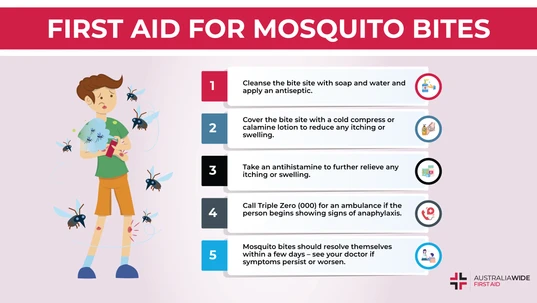
Mosquito bites usually go away on their own within a few days. However, you can aid the recovery process by cleansing the bite site and covering it with a cold compress or calamine lotion.
Mosquito bite first aid
In an emergency, mosquito bite first aid consists of the following steps:- Remove the person from the area where they were bitten as soon as possible.
- Wash the bite site with soap and water, and apply an antiseptic.
- Apply a cold compress or calamine lotion to the bite site to help reduce local pain and swelling.
- Take an antihistamine to relieve the swelling and itching. These medicines should be readily stocked in your DIY first aid kit.
- Resist the urge to scratch the bite site, as this may cause a blister, welt, or infection.
- If the person begins showing signs of an allergic reaction, call Triple Zero (000) for an ambulance, consult the Australian Resuscitation Council's anaphylaxis treatment guideline, and follow DRSABCD and be prepared to perform CPR.
- Mosquito bites usually go away on their own within a few days, but see a doctor if the bite does not improve or if you develop any other symptoms.
Final thoughts
Murray Valley encephalitis is a mosquito-borne disease that can cause acute and severe illness with some cases resulting in brain damage or death. Preventing mosquito bites is the best way to avoid being infected with Murray Valley encephalitis. Wearing long sleeves, using mosquito repellent, and keeping your home clear of any ideal mosquito breeding habitats (still standing water or debris in gutters) are simple but effective ways of preventing mosquito bites. To learn more about mosquito bite first aid and mosquito-borne illnesses, book a first aid course with us today.Resources
- SA Health: Murray Valley encephalitis - including symptoms, treatment and prevention
- Better Health Channel: Murray Valley encephalitis
- National Center for Biotechnology Information: Murray Valley Encephalitis Virus: An Ongoing Cause of Encephalitis in Australia's North
Originally published at
https://www.australiawidefirstaid.com.au/resources/murray-valley-encephalitis
as part of the Australia Wide First Aid Articles Library
